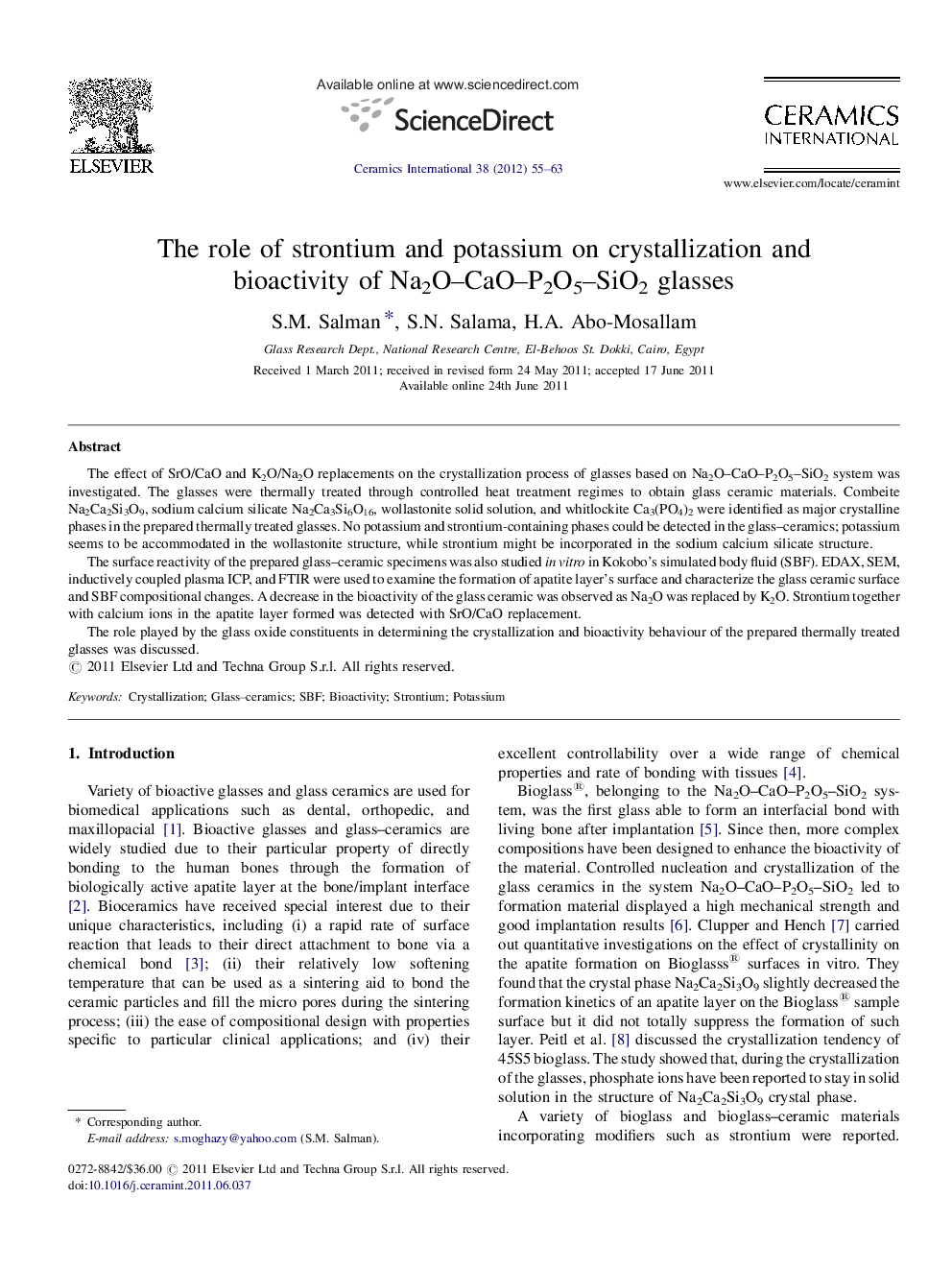| Article ID | Journal | Published Year | Pages | File Type |
|---|---|---|---|---|
| 1462828 | Ceramics International | 2012 | 9 Pages |
The effect of SrO/CaO and K2O/Na2O replacements on the crystallization process of glasses based on Na2O–CaO–P2O5–SiO2 system was investigated. The glasses were thermally treated through controlled heat treatment regimes to obtain glass ceramic materials. Combeite Na2Ca2Si3O9, sodium calcium silicate Na2Ca3Si6O16, wollastonite solid solution, and whitlockite Ca3(PO4)2 were identified as major crystalline phases in the prepared thermally treated glasses. No potassium and strontium-containing phases could be detected in the glass–ceramics; potassium seems to be accommodated in the wollastonite structure, while strontium might be incorporated in the sodium calcium silicate structure.The surface reactivity of the prepared glass–ceramic specimens was also studied in vitro in Kokobo's simulated body fluid (SBF). EDAX, SEM, inductively coupled plasma ICP, and FTIR were used to examine the formation of apatite layer's surface and characterize the glass ceramic surface and SBF compositional changes. A decrease in the bioactivity of the glass ceramic was observed as Na2O was replaced by K2O. Strontium together with calcium ions in the apatite layer formed was detected with SrO/CaO replacement.The role played by the glass oxide constituents in determining the crystallization and bioactivity behaviour of the prepared thermally treated glasses was discussed.
